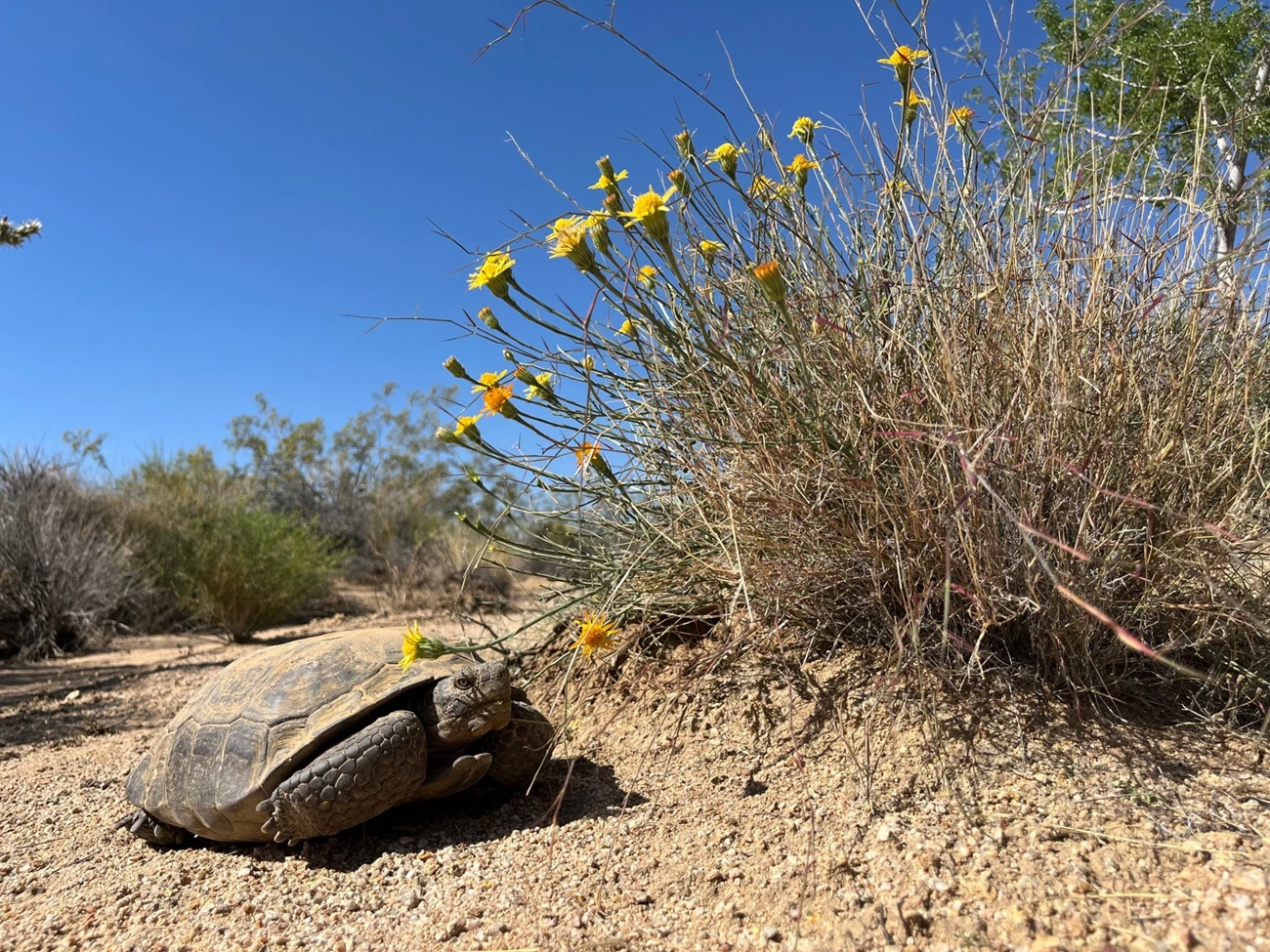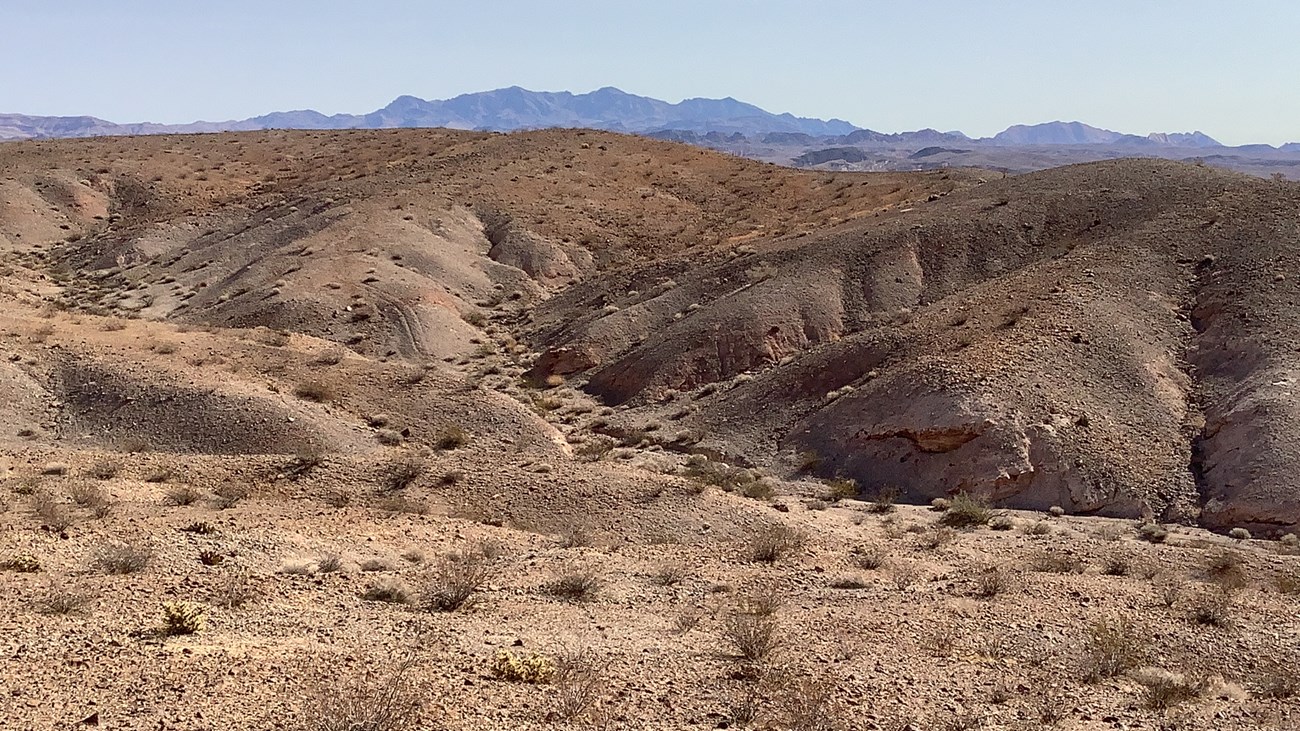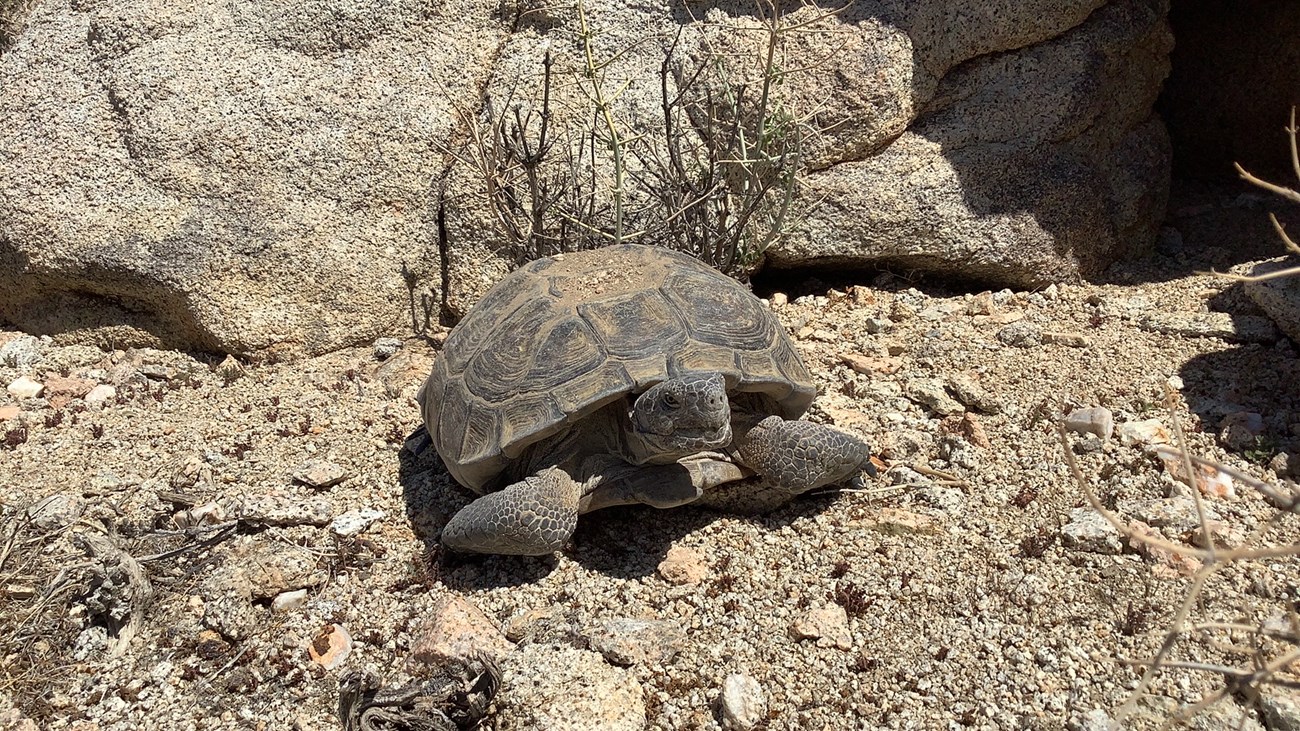Last updated: October 16, 2025
Article
Does slow and steady win the race? Lake Mead National Recreation Area Inventories Mojave Desert Tortoise
By Summer Boulais, I&M Science Communicator
May 20, 2025
Lake Mead National Recreation Area (NRA) is America’s first national recreation area, providing outdoor opportunities along the border of Arizona and Nevada. It also provides a home for the Mojave desert tortoise (Gopherus agassizii) whose population is currently in a rapid decline. Slow and steady wins the race in the famous fable The Tortoise and the Hare, but now this tortoise may be falling a little too far behind.
May 20, 2025
Lake Mead National Recreation Area (NRA) is America’s first national recreation area, providing outdoor opportunities along the border of Arizona and Nevada. It also provides a home for the Mojave desert tortoise (Gopherus agassizii) whose population is currently in a rapid decline. Slow and steady wins the race in the famous fable The Tortoise and the Hare, but now this tortoise may be falling a little too far behind.

NPS/Corey Mitchell
Mojave Tortoise vs. Major Threats
The desert tortoise lives up to its name by often residing in desert valleys, where it feeds on grasses and wildflowers. They are a critically endangered species according to the International Union for Conservation of Nature’s Red List. Major threats they face include their habitat becoming fragmented or lost due to urban development and infrastructure growth, as well as roadside incidents. In 1990, desert tortoise populations north and west of the Colorado River were listed as threatened under the Endangered Species Act. Lake Mead NRA is an ecologically important area for the desert tortoise; it sits at the intersection of federally listed and unlisted populations, spanning the Colorado River.
NPS/USFWS
Collaborative Conservation
There is suitable habitat for this species at Lake Mead NRA, but park managers were unsure of how many tortoises were in the park. They collaborated with the National Park Service’s Inventory and Monitoring Division and the U.S. Fish and Wildlife Service Desert Tortoise Recovery Office (DTRO) to survey for desert tortoises. They aimed to determine their population status and range within the recreation area. It is important to learn more about this long-lived desert resident to best conserve them and their habitat.Desert tortoises play a crucial role within the desert ecosystem by digging burrows that provide shelter for other species, provide seed dispersal, and they are often considered an indicator species—desert tortoises are sensitive to environmental change and can be a reflection of the health of their ecosystem.
Surveying the Slow
The U.S. Fish and Wildlife Service hosts a range-wide monitoring program of the tortoise that evaluates its population status. Each spring, they survey designated locations called “tortoise conservation areas” (TCAs) by line distance sampling. This method helps estimate how many tortoises are in a certain area by walking a set path and measuring how far the animals are from that path. In 2022, researchers conducted surveys using the same methodology in eight areas identified as potential tortoise habitat within Lake Mead NRA. Teams of two walked designated paths while making visual observations and recording sightings of living and dead desert tortoises. They noted their locations and recorded their size, sex, and general condition when possible.
NPS/USFWS
